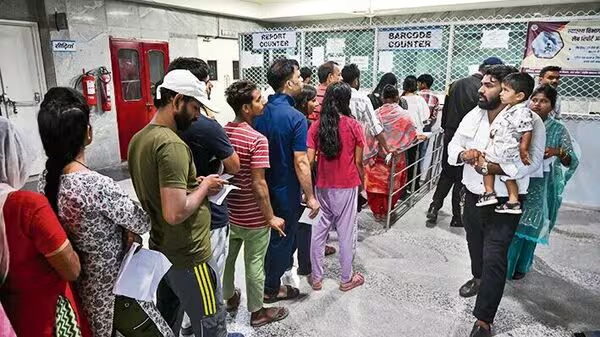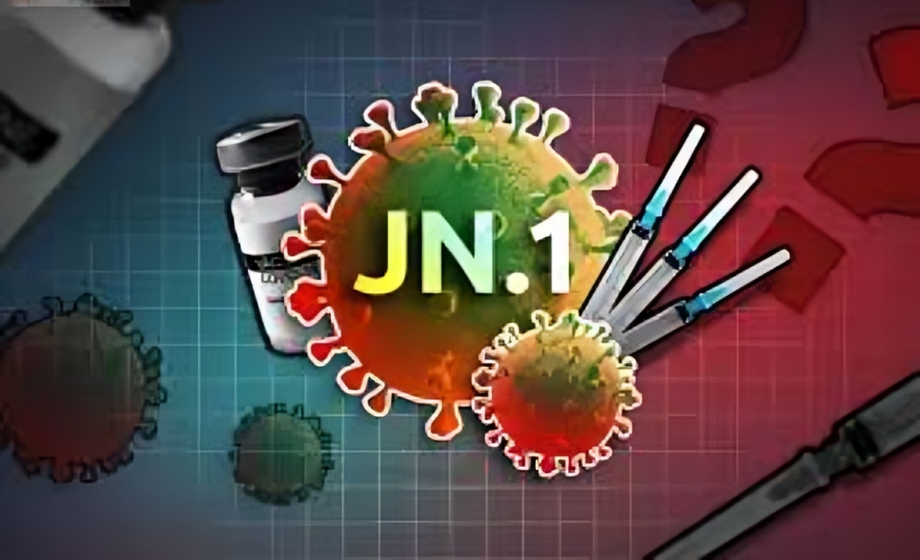New Delhi, June 21, 2025 — In a significant development for India’s ongoing Covid-19 response, the country’s active caseload has dropped to 5,976 as of Friday, down from 6,483 a day earlier. This decline comes despite the emergence of two newly identified Omicron sub-variants, NB.1.8.1 and LF.7, which are driving localized spikes in infections. Health authorities, however, have reassured citizens that disease severity remains low in most cases.
The Union Health Ministry confirmed that three new Covid-19 deaths were recorded in the last 24 hours—two from Delhi and one from Kerala—bringing the total number of fatalities in 2025 so far to 116. While the numbers remain relatively low compared to the pandemic’s peak years, constant surveillance and proactive measures continue to be the government’s top priority.
New Omicron Sub-Variants: NB.1.8.1 and LF.7 Explained
India’s latest Covid-19 cases are primarily linked to two new Omicron sub-lineages, NB.1.8.1 and LF.7, both of which have evolved from the highly transmissible JN.1 variant. These variants have been detected through genome sequencing efforts led by the Indian Council of Medical Research (ICMR) and affiliated labs under the INSACOG network.
- NB.1.8.1 and LF.7 are classified as recombinant variants, meaning they likely evolved from genetic recombination events between different Omicron strains.
- According to virologists, these variants are showing no signs of increased severity or higher rates of hospitalization.
- The majority of infections remain mild or asymptomatic, especially among vaccinated and previously infected individuals.
The ICMR has clarified that while these sub-variants exhibit slightly enhanced transmissibility, hospital admission rates remain stable, mirroring patterns observed with previous Omicron waves.
State-Wise Active Covid-19 Cases in India
Several states continue to report small but steady caseloads, particularly in regions with higher population densities and urban clusters. According to the latest health ministry data:
| State | Active Cases |
|---|---|
| Kerala | 1,309 |
| Gujarat | 1,046 |
| West Bengal | 747 |
| Delhi | 632 |
| Karnataka | 466 |
| Maharashtra | 443 |
While Kerala continues to see the highest number of active cases, health experts attribute this to robust reporting mechanisms and active surveillance by state authorities.

Why Is Genome Sequencing Critical?
The INSACOG consortium (Indian SARS-CoV-2 Genomics Consortium) has been actively conducting genomic surveillance to identify mutations and track variant spread across India.
- Earlier in 2025, the JN.1.16 variant was responsible for most infections.
- Currently, LF.7 and LP.8.1.2 variants are dominating the genomic profile of new Covid-19 cases.
- Positive samples, especially from SARI (Severe Acute Respiratory Illness) cases, are being prioritized for whole genome sequencing (WGS) to monitor the viral evolution.
Whole genome sequencing allows Indian scientists to track mutations in real-time, offering early warnings for potential outbreaks.
Government’s Preparedness: Nationwide Mock Drills and Oxygen Infrastructure
Recognizing the importance of pandemic preparedness, the Union Health Ministry recently conducted a nationwide mock drill to evaluate the oxygen supply infrastructure and critical care readiness of hospitals. Key focus areas included:
- Availability of oxygen cylinders and concentrators
- Readiness of isolation beds
- Ventilator stock monitoring
- Critical medicines inventory review
States and union territories have been instructed to submit readiness reports to the central government. The Health Ministry has reiterated that while Covid-19 has entered an endemic phase, preparedness against potential surges remains non-negotiable.
Covid-19 Recovery Rate in India: Positive Trends Continue
In the last 24 hours, 1,219 patients recovered, pushing the total recoveries for 2025 to 17,164. India’s national recovery rate remains above 98%, one of the highest globally, reflecting the combined effect of vaccination, natural immunity, and early intervention protocols.
According to the Ministry of Health and Family Welfare (MoHFW):
- The availability of booster doses (precautionary doses) has strengthened population immunity.
- Regular follow-ups on SARI and ILI cases ensure timely detection of serious infections.
Covid-Appropriate Behaviour Still Essential
Despite the lower severity of the disease, health officials have emphasized the continued importance of Covid-appropriate behaviour, especially in crowded public spaces, transport hubs, and hospitals. The following measures remain critical:
- Wearing masks in enclosed spaces like hospitals and public transport.
- Maintaining physical distancing, particularly in gatherings.
- Regular hand sanitization to prevent not just Covid-19 but other seasonal viral infections.
- Staying home when experiencing symptoms of cold, cough, or fever.
The ministry has stressed that Covid-19 has not completely disappeared and the virus, like influenza, will likely continue to circulate as part of seasonal respiratory infections.
Surveillance for Influenza and Respiratory Infections
To strengthen early detection efforts, state and district surveillance units are actively monitoring:
- Influenza-Like Illness (ILI) cases
- Severe Acute Respiratory Illness (SARI) hospitalizations
Every SARI case is tested for Covid-19, and 5% of ILI cases are sampled routinely. This strategy allows quick identification of potential variant-driven spikes and ensures public health systems stay ahead of possible outbreaks.
Is a New Covid-19 Wave Possible?
As of now, public health experts believe that a major Covid-19 wave in India is unlikely due to widespread immunity and lower virulence of emerging variants. However, small regional surges driven by new recombinant variants may occur intermittently, especially during monsoon and winter seasons when respiratory viruses typically thrive.
Vaccination coverage remains India’s strongest defense, alongside the vigilance of the scientific and medical community.
SpiceJet Flight Returns to Hyderabad Due to Technical Glitch

